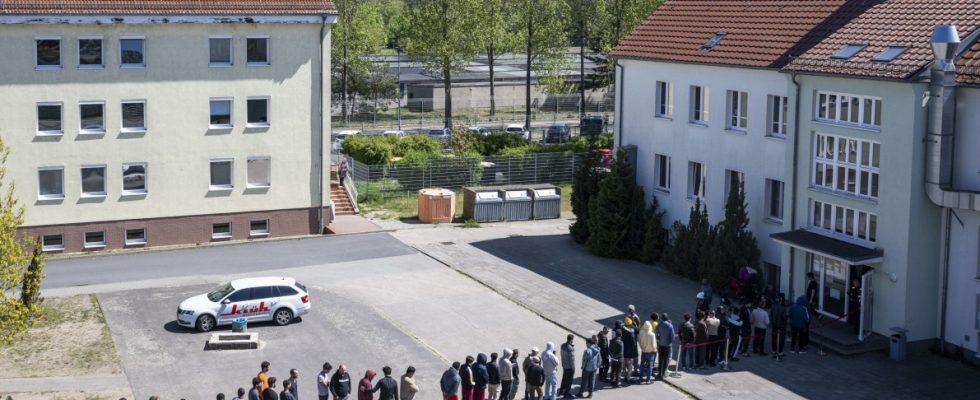The number of asylum seekers in Germany is apparently higher than previously known. This emerges from a letter from the President of the Federal Office for Migration and Refugees, Hans-Eckhard Sommer, in which the President points out registration backlogs. In the letter to Federal Interior Minister Nancy Faeser (SPD), the South German newspaper Sommer writes that there had already been a “massive increase” in the number of asylum seekers in 2022, which exceeded the capacity of his authority. A total of 244,000 asylum applications were submitted last year, including 218,000 initial applications.
The numbers declined in the first half of 2023. From August onwards there was another increase, which “once again significantly exceeded that of the previous year,” writes Sommer. It is “the highest access since 2015/16”. “Between 10,000 and 11,000 asylum applications are now registered every week”, in September there were 40,000 asylum applications and in October 43,500. But even these numbers do not reflect actual asylum access, “since the countries now have a significant backlog of registrations, so that “We actually had around 50,000 arrivals in September and around 55,000 in October.”
The refugees from Ukraine are not even included in the figures
Asylum requests are when people say, for example at the border, that they want to apply for asylum. Not everyone then submits a formal asylum application, but experience shows that the vast majority do. As of the end of October, the number of asylum applications in 2023 is already 280,000, the number of asylum applications is 287,000, including 267,000 initial applications. The time delay between the asylum application and the asylum application obviously comes into play here. By the end of the year, “an asylum access of 350,000 or even more can be expected,” writes Sommer.
After the Prime Minister’s Conference with the Federal Chancellor on November 6th, the joint resolution stated that it was “currently expected that more than 300,000 people from third countries will submit initial asylum applications in Germany in 2023 as a whole.” These figures do not even include the many refugees from Ukraine.
The current situation in the reception centers in which the Federal Office’s branches work with the respective state authorities “can only be described as dramatic,” writes Sommer in his letter to the Interior Minister. Despite close coordination with the state authorities and “predominantly good will”, it is becoming “increasingly difficult to maintain the coordinated standard processes”.
Migrants must be distributed quickly among the municipalities
In a number of federal states, “the reception capacity is now so full that distribution to lower-level accommodation or to the municipalities has to take place within a few days of the initial registration and health examination by the state” without his authorities having the chance to process the asylum application in the to receive a reception facility or to hold a hearing, writes Sommer. “Against the background of the public and political discussion of the last few months,” this situation is extremely critical. The distribution across municipalities makes quick asylum procedures more difficult. However, this is precisely the declared political goal, as was just confirmed again at the federal-state meeting.
The President of the Federal Office is of the opinion that the funds and positions provided for in the draft budget for 2024 for his authority are “in no way sufficient to cope with the high level of asylum access that is expected to continue next year, let alone enable a reduction in the number of pending procedures.” . He is therefore asking the Federal Minister of the Interior for support. Among other things, Sommer wants more staff and more money for IT services.
CDU leader Friedrich Merz said on Tuesday that Sommer’s letter shows that the number of asylum seekers in September and October was significantly higher “than we all originally assumed.” This has increased the urgency of making quick decisions in migration policy. CSU regional group leader Alexander Dobrindt said that the Federal Office’s figures show that we are “still stuck in a migration crisis” and that the measures that the traffic light coalition has wanted to take so far are not enough.

